[ARTPLOSHADKA] MOLDOVAmobil – a project on culture, politics and everyday life in Moldova interview with Katharina KOCH, Otilia Babara, Vladimir Us

(exhibition and cultural events in Berlin 11.5.-15.7.10, Leipzig 19.7.-21.7.10, Mannheim 27.9.-2.10.10)
Fiodorova Tatiana: Moldova is a small country and very few people know about it in the West. I wonder what stimulated your interest in our country and our culture?
Katharina KOCH: The Koordinierung Ostmittel- und Südosteuropa am Museum Europäischer Kulturen Berlin (Coordinator for Centraleastern and Southeastern Europe at the Museum of European Cultures) Berlin focus` in the frame of exhibitions and cultural events on different regions and countries in Eastern Europe in order to advance the exchange and dialogue between people, institutions and organizations of those countries with the ones from Western Europe. As Moldova is one of those countries which is still like a “white spot” on the mental map of most habitants in the western hemisphere, although Moldova is one of the closest neighbors of the European Union, the project MOLDOVAmobil was trying to put some afford to change this. Our approach is to give some insights in social, cultural and political situations and developments in Moldova, which are not representative of course, but instead point different perspectives of people from Moldova on their country – through interviews, photos, films, quotations etc. Another intention is the deconstruction of some stereotypes and clichés about Moldova and Eastern European countries in general (prostitution, sex trafficking, high rate of criminality, uncivilized…) but without disguising real problems of the country and its society like the high migration rate and the still difficult economical, social and political situation. In the long run MOLDOVAmobil likes to develop a continuous exchange and dialogue between academics, theorists, artists, activists and social, political and cultural institutions from Moldova and Germany. Moreover it intends to enlarge a broader network in the European context.
Fiodorova Tatiana: Please tell us about the project “Moldova Mobile.” What gave you the idea to make a mobile exhibition, and to have an exhibition about Moldova in the minibus.
Katharina KOCH: The idea of the mobile exhibition has different reasons. For the one hand it is an advanced and adequate concept of exhibiting in times in which mobility is one of the most important issues around the globe. In a mobile way you can attract a very heterogeneous public and people who usually would avoid to visit a museum. The microbus was temporally located in very different areas of Berlin – from the centre where a lot of tourists, students etc. are around until places within residential neighborhoods. Most of the places were connected with an academic or cultural institution which worked as our cooperation partners (like Goethe-Institut, ifa-gallery, daad-gallery, cinema Brotfabrik, Schwartzsche Villa etc.) for the series of events which accompanied the exhibition.
For the other hand, the mobile form refers to the aspects of mobility and migration which are very significant for Moldova. Especially the microbuses seem to be the warrantor for mobility within the country and beyond its borders. But it also refers on the mobility and activity of people working in different NGOs or being engaged in other ways and trying to move something for good in Moldova.
Next to the microbus we have a foldable bus stop constructed. Both, microbus and bus stop, remind of the real ones in Moldova.
Fiodorova Tatiana: What works were shown at the exhibition?
Katharina KOCH: We have 6 “stations/seats” where you can listen to interviews with different people from Moldova on different topics like: social and political situation, migration, Transnistria, minorities, identity/language, civil society.
Moreover one can watch series of photos from different cities/places from Moldova and listen to Moldavian pop music on the front seat, one can read quotations from Moldavian people about their views on different aspects of Moldova’s society and one can watch films (shorts, documentaries) from Pavel Brăila, Otilia Babără, Ana-Felicia Scultenicu, Vladimir US, Katharina Koch, Roland Ibold, Joanne Richardson, Octav Esinencu, Ghenadie Popescu… in the back seats.
Another seat in the back offers a touch screen with a series of websites from different NGOs and institutions from Moldova or from Germany and Austria but linked to Moldova.
In the bus stop one can find the latest news from Moldova in 4 languages (Romanian, Russian, German, English). Every week we updated them.
As introduction we put some basic information about the country outside the bus.
Fiodorova Tatiana: What meetings were held and with whom?
Katharina KOCH: The exhibition in the microbus was accompanied by a series of academic and cultural events taking place in different institutions (ifa-gallery, daad-gallery, cinema Brotfabrik, Schwartzsche Villa, Humboldt-Universität, Europäische Akademie, Goethe-Institut) with whom we cooperated.
We had a reading with the dramatist Nicoleta Esinencu, a film presentation by the artist Pavel Brăila and another presentation by the artist Vladimir US about his art projects in the public space of Chişinău, we had a week of films from Moldova and invited some filmmakers to present their own works – like Otilia Babără, for example. And we had a series with academic presentations at the Goethe-Institut and at the Humboldt-University with the project-team Moldovarious from Austria, for example. At the Europäische Akademie we had a political discussion on the “Transnistrian conflict” with the politicians Victor Osipov (Moldova) and Vladimir Yastrebchak (Transnistria), initiated by the German-Moldavian Forum, who is also our main partner in the whole project.
For more information regarding the program, please check our website:
http://moldovamobil.eu/programm/
Fiodorova Tatiana: Tell us about the most interesting events and incidents that have occurred with this project.
Katharina KOCH: We had a lot of interesting encounters and I consider also all events as very interesting as they were such different from each other and put diverse spotlights from different fields and perspectives on the topic. Most interesting were those encounters in which people got in touch with each other, exchanged ideas and discussing about further ways of cooperation and exchanges in the future (our team as organizers with the invited artists/theorists but also the public with the artists/theorists).
Fiodorova Tatiana: What was the reaction to the exhibit by Berliners? Did they express an interest in getting acquainted with Moldovan culture?
Katharina KOCH: We had very different reactions. A lot of people who came had already some kind of connection to Moldova or to the region. Often it was a really thin connection like people who were travelling there once as students during soviet times, for example.
But we had also guests who hardly had heard about the country and who were just curious to know more about it. Sometimes it was not that easy to convince people to get in the bus, to sit down and to take the time to listen, read and watch. But if they got in most of them stayed for a longer time and consider the project as great and important, as well.
Some funny encounters we had when people mistook us for a tourist agency from Moldova, a charitable society for Moldova or even for a seller of ice-cream …
The questions which were put the most were:
Is that the same country like “Moldavia”? Why do you call it “Republic of Moldova”?
Which language do they speak there?
Fiodorova Tatiana: Do you plan to continue this project and in what form?
Katharina KOCH: This is unfortunately not for sure yet as the microbus is not ours and we have to see what the owner intends to do with it. But there are some ideas and the wish to continue – to bring the exhibition to other places in Europe and first of all to Moldova, of course. For Moldova we had also some discussions with one Moldavian artist in order to use the microbus in different ways and with different contents as “art and cultural” mobile in Moldova. At the moment it is only sure to bring the exhibition to Mannheim for one week in September (27.9.-2.10.10) and to continue to work on the website: www.moldovamobil.eu
FiodorovaTatiana: Otilia, povesteste-mi te rog despre participarea ta in Proiectul MoldovaMobil.
Otilia Babara: Deci pe mine ma contatctat Katharina sa ma intrebe daca asa fi dispusa sa vin in iunie la Berlin cu o selectie de scurtmetraje, si eu am acceptat.
La Berlin a fost o saptamana intrega acu filme facute in Moldova sau pur si simplu despre Moldova facute de straini. Eu am fost prezenta in cadrul proiectului doua zile. In prima zi am prezentat scurtmetraje moldovenesti si in cealalta doua lungmetraje.
Publicul s-a dovedit a fi foarte receptiv chiar daca nu in numar mare, dar dupa proiectii au fost foarte interesati sa afle cat mai multe despre ce au vazut,au avut foarte multe intrebari la care am raspuns si discutile au continuat chiar si dupa iesirea din sala ca o bere pe terasa cimenatografului.
Cam atata despre participarea mea.
FiodorovaTatiana: Expozitia propriu-zisa a avut loc intr-un microbus. Ce era expus in microbusul asta, lucrari a caror autori si ce ti sa intiparit mai bine.
Otilia Babara: MoldovaMobil se intamla in felul urmator:
Era un microbus in careputeai asculta interviuri cu oameni din moldova, erau ecrane (mici displaiuri in care putei sa urmaresti imagini din Moldova si fragmente din filmul “intre Lumi” a Katharinei.
Langa microbus era o masuta cu reviste moldovenesti si seminte si o statie de autobus improvizata (statie asa cum gasesti in toata Moldova din asta facuta cu mozaic).
Pot sa-ti trimit poze daca vrei:)
In statie putei sa citesti stiri despre Moldova care erau updatate zilnic si sa vezi fotografii cu oameni din Moldova.
Statia asta improvizata era foarte reprezentativa si chiar parca era rupta dintr-un colt a Moldovei si pusa in mijlocul berlinului.
MOldovaMobilul circula, in fiecare saptamana era in alta zona a Berlinului, si oamenii care treceau pe alaturi puteau sa intre sa vada sa citeasca sa asculte.
FiodorovaTatiana:Vladimir, vreau sa-ti adresez urmatoarea intrebare. Organizatia Oberliht a fost invitata sa stabileasca un dialog intercultural intre Germania si Republica Moldova. Vorbeste-ne despre prezentarea ta, unde a avut loc, sub ce forma si ce anume a fost prezentat.
Vladimir Us: Am fost invitat pentru a prezenta ultimele cîteva proiecte pe care le-am initiat în cadrul Asociatiei Oberliht si care se raportează într-un fel anume la spatiul public din Chisinău, iar la o scară mai mare si la spatiul urban din fostele orase sovietice. Spatiul public de la noi trece si astăzi prin multiple procese de negociere, în prezent, acesta fiind revendicat în special de comercianti si politicieni fapt care, din păcate, îi determină functia si rolul. Nu întîmplător multe grupuri ramîn în afara acestor procese de negociere obscure, acestea din urmă fiind dirijate de elitele financiare si politice, astfel multă lume este marginalizată sau chiar exclusă de la posibilitatea de a se folosi de spatiul public, spatiu care îi apartine pe drept deplin.
Prezentarea s-a axat pe proiectele CHIOSC si INTERVENTII3 (co-curator Natasa BODROZIC), ultimul fiind prezentat sub forma unui film ce a documentat activitătile produse în cadrul proiectului. Evenimentul a avut loc la ifa-Galerie din Berlin si a fost următ de o discutie moderată de către Silke Baumann, curator-asistent la Bienala din Berlin.
Fiodorova Tatiana: Povesteste-ne despre impresiile tale vizavi de acest proiect in general. Dupa parerea ta, cum au reactionat berlinezii la prezentarea R.Moldova intr-un asemenea format?
Vladimir Us: Forma expozitională propusă de echipa de curatori a proiectului MOLDOVAmobil mi-a părut inovatoare, ea raportîndu-se la realitatea noastră într-un mod creativ. Cunoasterea destul de bună a situatiei de la noi se datorează si faptului că unii din organizatorii proiectului au vizitat de mai multe ori Moldova iar altii s-au aflat mai multe luni aici. În cele din urmă se simtea si o abordare destul de individuală a problemelor caracteristice zonei, fapt care a determinat în parte si continutul proiectului, iar instalatia-cadru (microbusul si statia) în care au fost prezentate mai multe lucrări si contributii pînă la urmă poartă o marcă specifică occidentalilor, acestia deseori apelînd la procedeuri de exoticitare a realitătii noastre în raport cu realitatea lor.
……………………………………………………………………………………………………………………………………………
https://artploshadka.wordpress.com
artploshadka@gmail.com








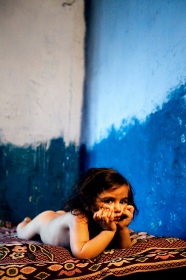
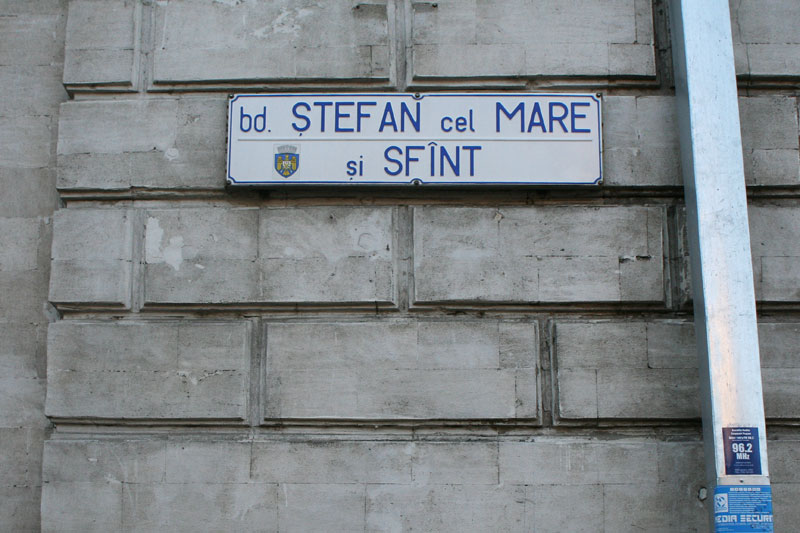
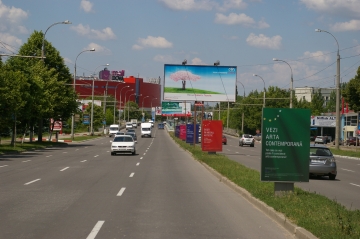

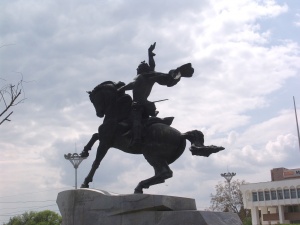

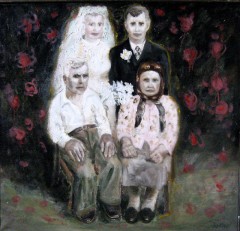
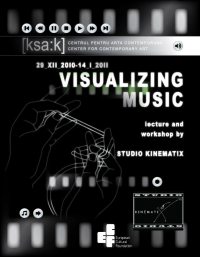

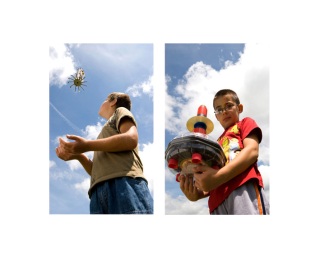
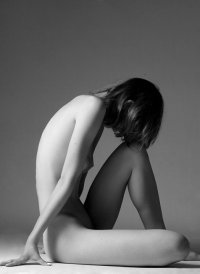
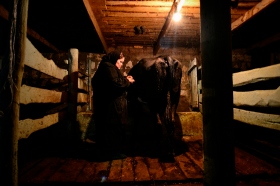
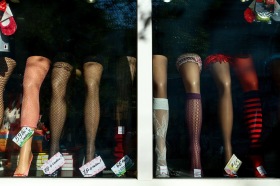
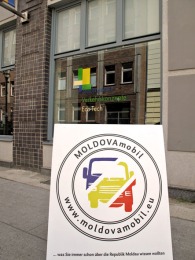
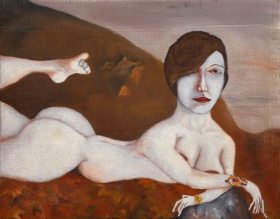
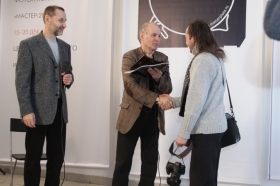



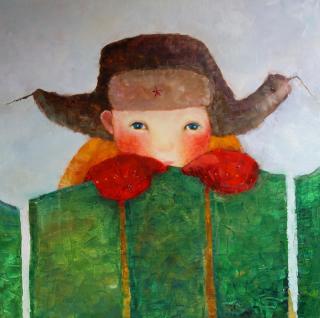
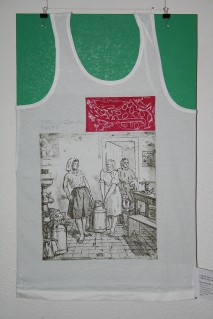
Trackbacks